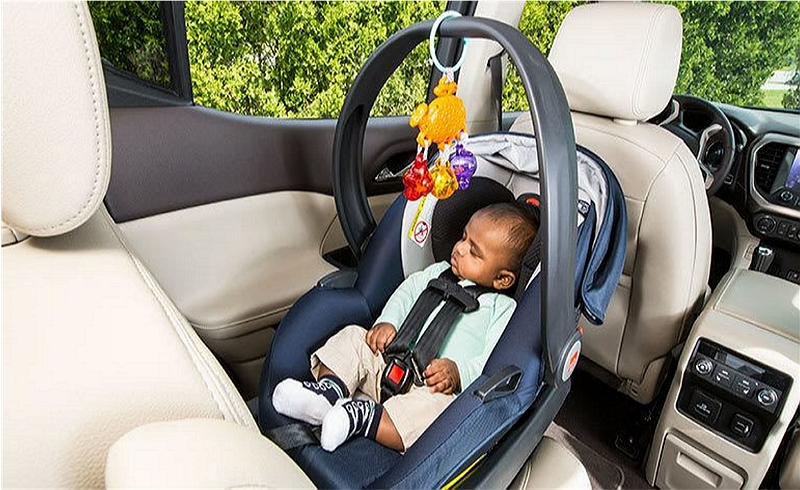When to get a convertible car seat? A convertible car seat is a type of child safety seat that can be used from infancy through adolescence.
A general guideline for when to switch from rear-facing to forward facing has been set by the American Academy of Pediatrics (AAP). The AAP recommends keeping children in rear-facing seats until they are two years old or have reached the maximum height and weight for their seat.

After that, children should remain in a forward-facing car safety seat with a harness until they reach the top height or weight limit allowed by their car safety seat manufacturer. At this point, it is safest to keep your child in a belt positioning booster seat until he or she is big enough to fit into an adult safety belt properly (typically when they are between eight and twelve years old).
What is the difference between all in one and convertible car seats?
This is a good question. Car seats are designed to be used in one of two ways: all in one or convertible car seats. When you look at the different types, it can get confusing because there isn’t just an easy way to tell which type your child needs right now and which will work best for their future use.
All-in-one car seats tend to have lower weight limits but provide more protection from birth through booster age while convertible models allow you some flexibility when choosing how long they’ll last before transitioning into another seat later on down the road. In general terms here’s what happens with each kind over time:
All In One Seats These little guys typically start out as rear facing only infant carriers that go up to somewhere between 20 and 40 pounds. Once your child is older than two years, you’ll want to switch them into a front facing model with a higher weight limit for their age group (again around 30-50 lbs).
Convertible Seats Convertible car seats are the most popular type of seat on the market today because they can be used longer as your child grows from an infant carrier all the way up through booster ages without having to purchase additional models or use specialty equipment like high back boosters that aren’t safe until children grow big enough.
The downside is since they’re not designed for infants right out of the box, it’s necessary to buy a separate base for each stage making these types slightly more expensive in the long run.
At what weight can a child be forward facing?
At what weight can a child be forward facing? They should not exceed the upper height and weight limits as specified by their car seat manufacturer.
It’s best to follow your car seat instruction manual, but here is an easy rule of thumb: if your child reaches forward from his/her backseat to touch the front seat or sit against it (without slouching), he/she probably needs a bigger model.
Is rear-facing safer after 2?
Rear-facing may be even safer after age two. A study published in 2011 showed that children under the age of two who were involved in a crash while riding rear-facing had half the rate of head injury compared to forward-facing toddlers with similar crashes.
It is important not to wait too long, however, for this safety benefit does decline as kids get older and heavier! The AAP recommends keeping your child rear facing until they are at least one year old or 20 pounds (whichever comes first). This recommendation has been around since 2002 but was reinforced by new evidence showing how much safer it really is.
We do know some things about what happens when infants are restrained incorrectly though! For example, an incorrect chest clip can result in severe internal organ damage if a crash occurs. It is important to make sure the chest clip is at armpit level and that your child can sit up straight with their back against the seat (not slumped forward or leaning toward the buckle).
Please note: it might be easier for parents to keep children rear-facing until they are three years old when using convertible car seats because of how much longer these seats last, but we do not advise keeping kids this way beyond two just so you don’t have to buy another one!
Keeping them rear facing as long as possible is always safest regardless of what kind of car seat you use. If buying a new convertible car seat doesn’t work for your budget, check out our page on ways to save money on the purchase of a convertible car seat.
Three or four-point harnesses are safest for children, as their design helps reduce injuries in crashes by reducing forward movement and minimizing side to side motion (side impact). Most infant seats today use five point harnesses but some convertibles and all travel systems have three-or four-point safety belts that can be used with infants.
The center rear seat is also considered the safest location in the vehicle so choose this seating position if at all possible! If you must put your child behind an airbag it is best to place them in a rear facing infant carrier since they will be more protected from potential harm than when placed in a convertible.
Rear Facing may be even safer after age two. A study published in 2011 showed that children under the age of two who were involved in a crash while riding rear-facing had half the rate of head injury compared to forward-facing toddlers with similar crashes.
It is important not to wait too long, however, for this safety benefit does decline as kids get older and heavier! The AAP recommends keeping your child rear facing until they are at least one year old or 20 pounds (whichever comes first).
This recommendation has been around since 2002 but was reinforced by new evidence showing how much safer it really is.
